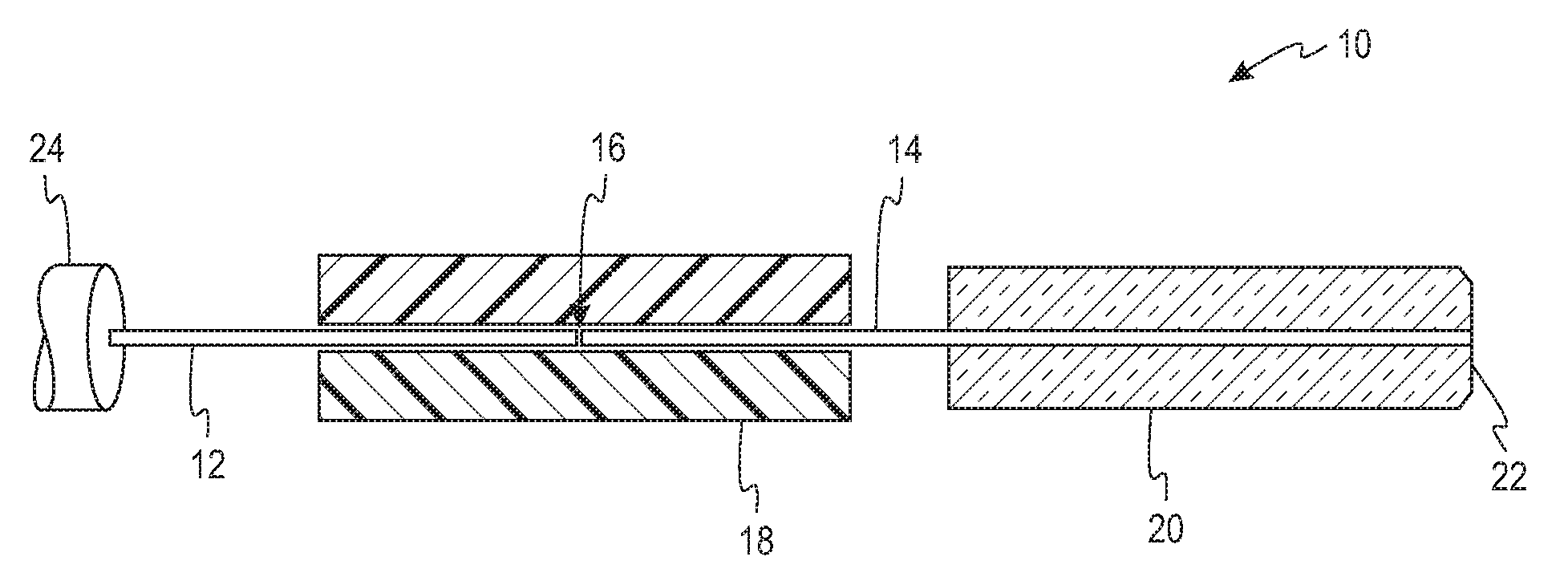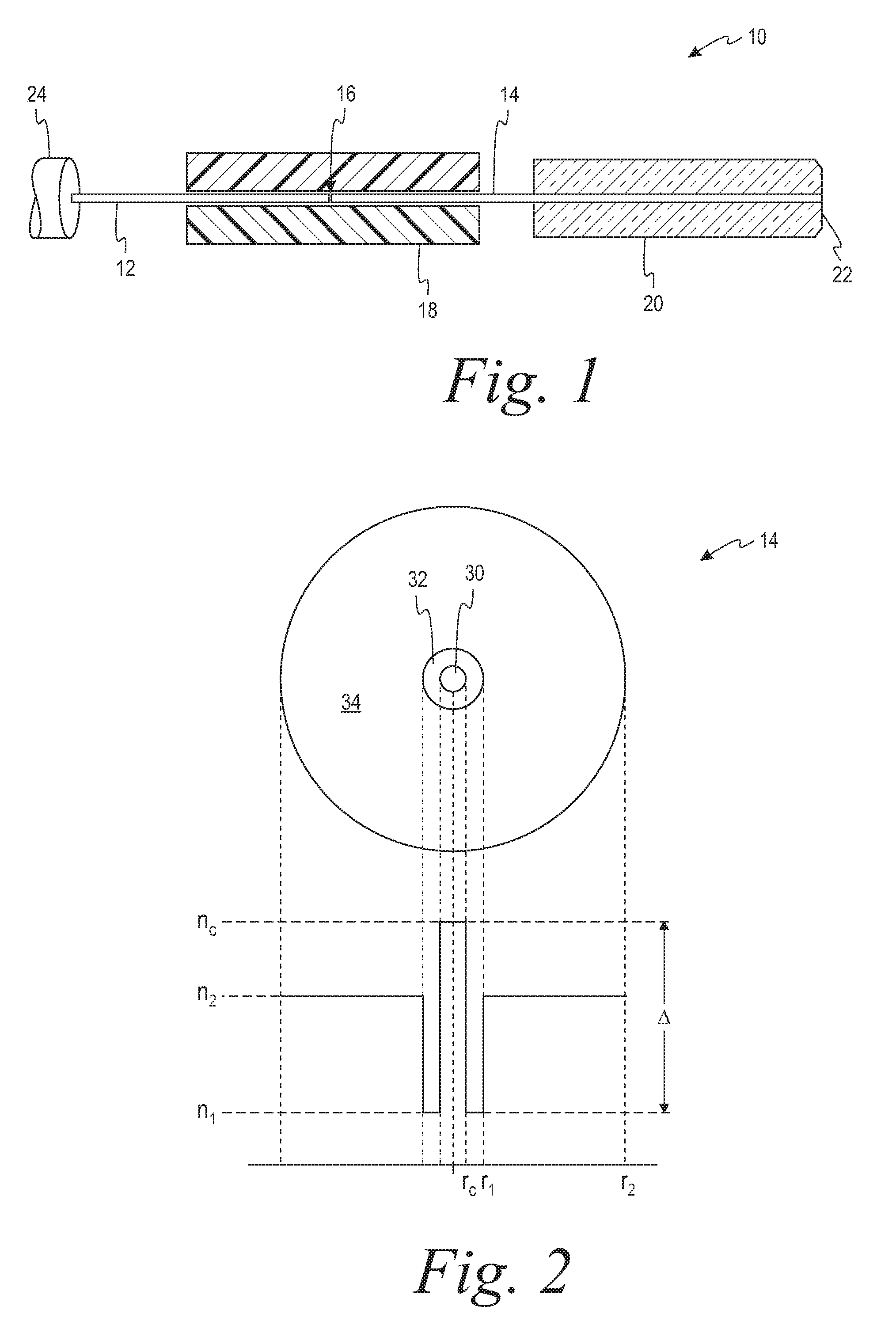Fiber optic connector with double-clad stub fiber
a fiber optic connector and fiber optic technology, applied in the field of fiber optic connectors, can solve the problems of optical interference effects, overall increase in the loss of insertion of the connector interface,
- Summary
- Abstract
- Description
- Claims
- Application Information
AI Technical Summary
Benefits of technology
Problems solved by technology
Method used
Image
Examples
Embodiment Construction
[0009]FIG. 1 is a cross-sectional side illustration of a field-terminated pre-polished fiber optic connector 10 for terminating a field fiber 12, according to an aspect of the present invention. The field fiber 12 is a single-mode optical fiber having a single cladding. The connector 10 couples together the field fiber 12 with a stub fiber 14, which forms an interface 16 where the two fibers 12, 14 abut against one another within the connector 10. The connector 10 is optionally of the type generally described in commonly assigned, U.S. Pat. No. 7,011,454, entitled “Reversible Fiber Optic Stub Fiber Connector,” issued Mar. 14, 2006, though other fiber optic connectors can be used. An alignment member 18 may comprise v-groove planks for aligning ends of the fibers 12, 14 in a fixed relationship with one another. A ferrule 20 surrounds part of the stub fiber 14, and a pre-polished end of the stub fiber 14 is positioned at a pre-polished front face 22 of the ferrule 20 so that together ...
PUM
 Login to View More
Login to View More Abstract
Description
Claims
Application Information
 Login to View More
Login to View More - R&D
- Intellectual Property
- Life Sciences
- Materials
- Tech Scout
- Unparalleled Data Quality
- Higher Quality Content
- 60% Fewer Hallucinations
Browse by: Latest US Patents, China's latest patents, Technical Efficacy Thesaurus, Application Domain, Technology Topic, Popular Technical Reports.
© 2025 PatSnap. All rights reserved.Legal|Privacy policy|Modern Slavery Act Transparency Statement|Sitemap|About US| Contact US: help@patsnap.com



